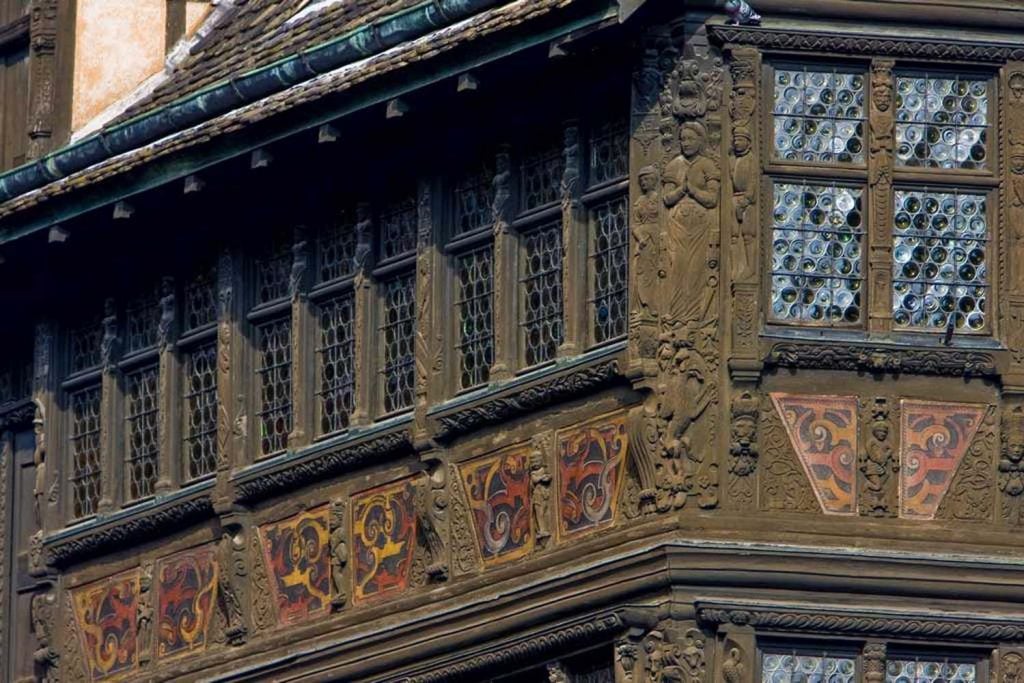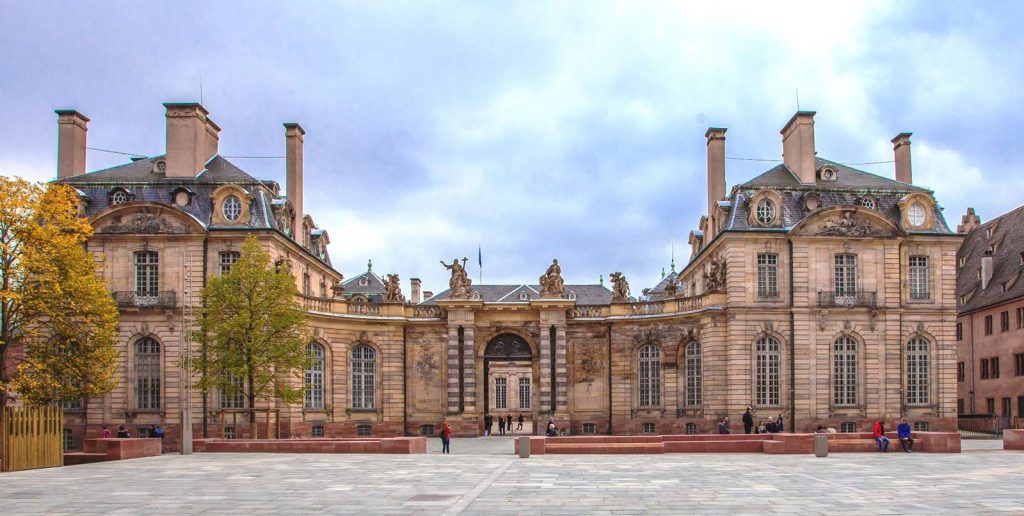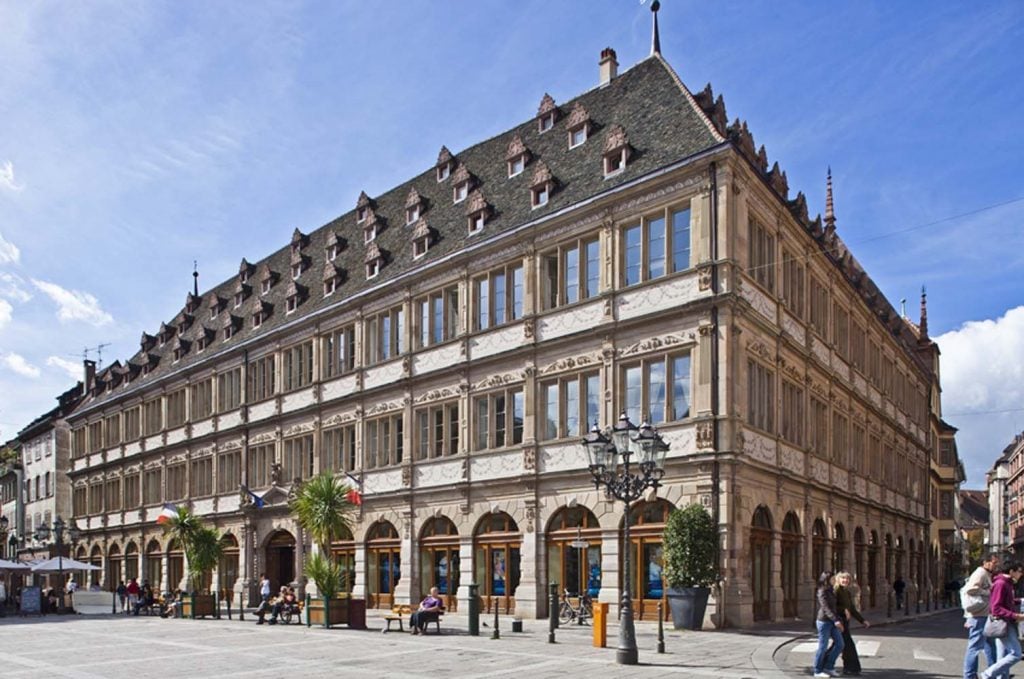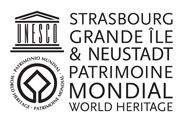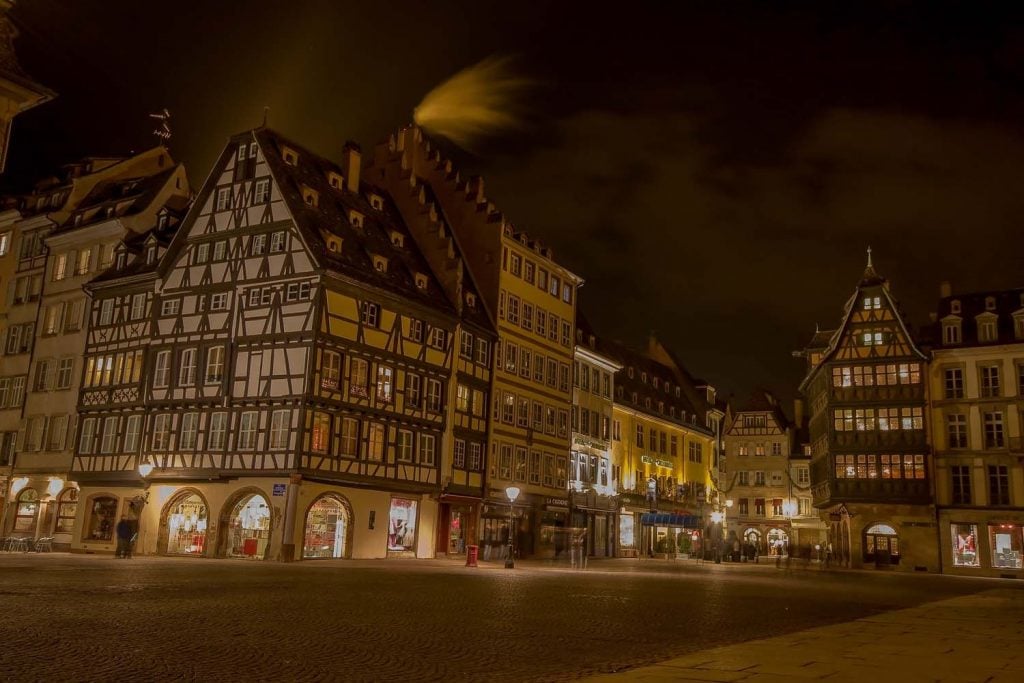
The Cathedral district
The fully pedestrianised Cathedral district is unique for its cosy, narrow streets, most of which are lined with shops. In addition to various renowned food businesses, you’ll also discover the famous winstubs, which are traditional restaurants / wine bars serving Alsatian specialities. The area boasts a number of very pleasant squares, such as Place du Château, featuring the Œuvre Notre-Dame Museum and the Palais Rohan, and Place du Marché Gayot, where, come spring, café terraces abound; and many other squares.
At the base of the Cathedral, this famous Strasbourg building is a wonder to behold. In the Renaissance style, it dates back to the 15th century. Its steep roof, beams sculpted with secular subjects, crown glass windows and stone ground floor inspire admiration. Formerly a merchant’s house, it is now a renowned restaurant. The dining rooms on several floors offer an intimate setting and a remarkable decor.
Very close to the Cathedral, Palais Rohan is one of Strasbourg’s iconic monuments. It was completed in 1742. First the place of residence of the four cardinals of Rohan, then city hall and then an imperial and royal palace, it is a testament to the princely art of living of the 18th century. Its classical architecture is inspired by fine Parisian townhouses. The palatial facade overlooks the Ill River. With seventeen strictly aligned windows and three avant-corps (protruding sections), it is impressive for the simplicity of its order and the harmony of its proportions.
The Alsace Eurométropole Chamber of Commerce and Industry is in a magnificent late 16th-century building, the Neubau. Located on Place Gutenberg Square, this remarkable, extremely rigorously symmetrical building was constructed in cut stone, a daring choice at the time because it was in sharp contrast with the local architectural style, which usually used half-timbering. It caused quite a controversy when it was built. During the holiday season, it is illuminated in spectacular fashion. On the same square, you can admire the statue of Gutenberg, honouring the inventor of the printing press.
Discreet and set back from the street, this church is truly a wonder to behold and absolutely one of Strasbourg’s finest churches. Historians believe that the church, which was built at the same time as Strasbourg Cathedral, served as a model for it. Its portal bears a striking resemblance to those of the Cathedral. Inside, the church has much to offer, with its numerous exceptional frescoes (circa 14th century) and paintings. Its rood screen, a rare element, is splendid, as is its cloister, an amazing oasis of silence right at the heart of the city.
Very close to the Petite France district, this imposing church is unique for its special shape and two bell towers. It is known as the “cathedral of Protestantism in Alsace”. Combining Romanesque and Gothic styles, it has a simple design yet features many points of interest inside, the main one being the impressive and monumental mausoleum of Marshal Maurice de Saxe, a masterpiece of 18th-century sculpture created by Jean-Baptiste Pigalle, a master sculptor of his time.
The main squares
A hub of life in the city, Place Kléber is also Strasbourg’s largest square. This is where the Big Christmas Tree is placed every year during the Christmas Market. The square is named after General Kléber, whose ashes are kept in a crypt under his statue.
You’ll find the Aubette here – a long neoclassical building featuring a shopping centre, as well as an avant-garde recreation complex, a gesamtkunstwerk (total artwork) in the De Stijl style, designed by Theo Van Doesburg, Hans Jean Arp and Sophie Taeuber-Arp in 1928.
Place Broglie is the market square! Formerly a horse market, this square is now where the outdoor market is held on Wednesdays and Fridays, but also the Christkindelsmärik, otherwise known as the Christmas Market! Around Place Broglie Square, you can admire an Art Nouveau building, City Hall, the military governor’s residence, as well as the opera house. And, importantly, it was in one of the houses surrounding this square that Rouget de l’Isle wrote the French national anthem, La Marseillaise.
